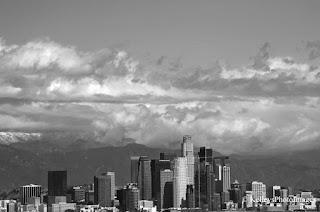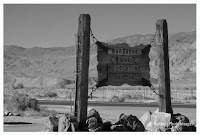Introduction
When people refer to Los Angeles, they are typically referring to Los Angeles County or even nearby Orange County (home of Anaheim’s Disneyland). The city of Los Angeles is the second largest city in the U.S. by population and the largest by square miles.
Downtown Los Angeles is located close to the geographic center of the metropolitan area. This area features many of the city's major sports facilities, art institutions and sightseeing opportunities. There is also many unique shopping opportunities. Downtown is generally bounded by the Los Angeles River on the east, the Hollywood (101) Freeway to the north, the Santa Monica (10) Freeway on the south and the Harbor (110) Freeway on the west.

Map of Downtown Los Angeles
History
 The earliest known settlements in Dowontown Los Angeles was by the Tongva, a Native American people. On Wednesday, August 2, 1769, Father Juan Crespi, a Franciscan priest accompanying the first European land expedition through California, led by Captain Fernando Rivera Y Moncado, described in his journal a "beautiful river from the northwest" located at "34 degrees 10 minutes." They named the river Nuestra Señora de los Angeles de la Porciúncula.
The earliest known settlements in Dowontown Los Angeles was by the Tongva, a Native American people. On Wednesday, August 2, 1769, Father Juan Crespi, a Franciscan priest accompanying the first European land expedition through California, led by Captain Fernando Rivera Y Moncado, described in his journal a "beautiful river from the northwest" located at "34 degrees 10 minutes." They named the river Nuestra Señora de los Angeles de la Porciúncula.In the Franciscan calendar, August 2 was the day of the celebration of the feast of the Perdono at the tiny Assisi chapel of St. Francis of Assisi.
Early in St. Francis’ life, the Benedictines had given him this tiny chapel for his use near Assisi. The chapel, ruined and in need of repair, was located on what the Italians called a porziuncola or "very small parcel of land." Painted on the wall behind the altar was a fresco of the Virgin Mary surrounded by angels. Now contained within a Basilica, the chapel was named Saint Mary of the Angels at the Little Portion.
The newly discovered "beautiful river" was named in honor of this celebration and this chapel. In 1781, a new settlement was established along that river.

The settlement came to be known as El Pueblo de Nuestra Señora la Reina de los Angeles de Porciúncula or The Town of Our Lady the Queen of Angels of the Little Portion although its official name was simply El Pueblo de la Reina de Los Angeles.
On Septemper 4, 1781, the Los Angles was founded on the site that currently holds La Placita Olvera. Land speculation increased in the 1880s, which saw a population of the city explode from 11,000 in 1880 to nearly 100,000 by 1896.
Laying of a street grid and other infrastructure enhancements brought development to the area south of the original settlement into what is today the Civic Center and Historic Core neighborhoods.
 By 1920, the city had been transformed into a large metropolitan area, with Downtown as the center. The city's rail lines connected four counties with over 1,100 miles of track. The banking institutions clustered around South Spring Street, forming the Spring Street Financial District. Sometimes referred to as "Wall Street of the West." The Los Angeles Stock Exchange was located here from 1929 until 1986. During the early part of the 20th century, many people worked and lived in Downtown Los Angeles.
By 1920, the city had been transformed into a large metropolitan area, with Downtown as the center. The city's rail lines connected four counties with over 1,100 miles of track. The banking institutions clustered around South Spring Street, forming the Spring Street Financial District. Sometimes referred to as "Wall Street of the West." The Los Angeles Stock Exchange was located here from 1929 until 1986. During the early part of the 20th century, many people worked and lived in Downtown Los Angeles.Following World War II, several factors lead to the decline of Downtown Los Angeles including suburbanization and the development of the Los Angeles freeway network enabled many corborate headquarters and people to disperse to these new suburbs. The remaining financial corporations moved to newer buildings, leave the former Spring Street Financial District buildings vacate above the ground floor. Many historic office buildings were left intact. They were used for storage or left empty.

Today's Financial District of Downtown Los Angeles
In 1999, the Los Angeles City Council passed and ordinance that made it easier for developers to convert vacant commercial and office buildings into renovated condo, lofts and luxury apartments. Residential population has increased from 28, 878 residents in 2006 to 39,537 in 2008. The Staples Center, which opened in 1999, has been a major contributing factor to the revitalization of Downtown Los Angeles. It added 250 events and approximately 4,000,000 visitors to this area.
Who's Taller

The first high-rise in Los Angeles was the Braly Building. The Braly Building was completed in 1903 it has 13 floors and stands 174 feet high. In 1904, the Los Angeles City Council enacted a 150-foot height limit on on future buildings. This building was originally a commercial structure and has since been renovated into a residential tower. It is now known as the "Continental Building".
For many people, the many skyscrapers of Bunker Hill are synonymous with downtown Los Angeles. Downtown is actually a diverse collection of neighborhoods including Little Tokyo, the New Chinatown and the El Pueblo de Los Angeles along with Civic Center, Financial District, Jewelry District and Fashion District. Downtown is also home to some of the most unique and stunning examples of architecture.

To view photo gallery for Los Angeles Skyline, click here.
Location used in Media
- 4Movies: The Omega Man, Collateral, The Day After Tomorrow, Independence Day, Dragon Wars and Blade Runner.
- 4Television miniseries: 10.5.
References
1. ^ a b "Downtown Los Angeles". wikipedia.org. http://en.wikipedia.org/wiki/Downtown_Los_Angeles. Retrieved on 2009-08-14.



















